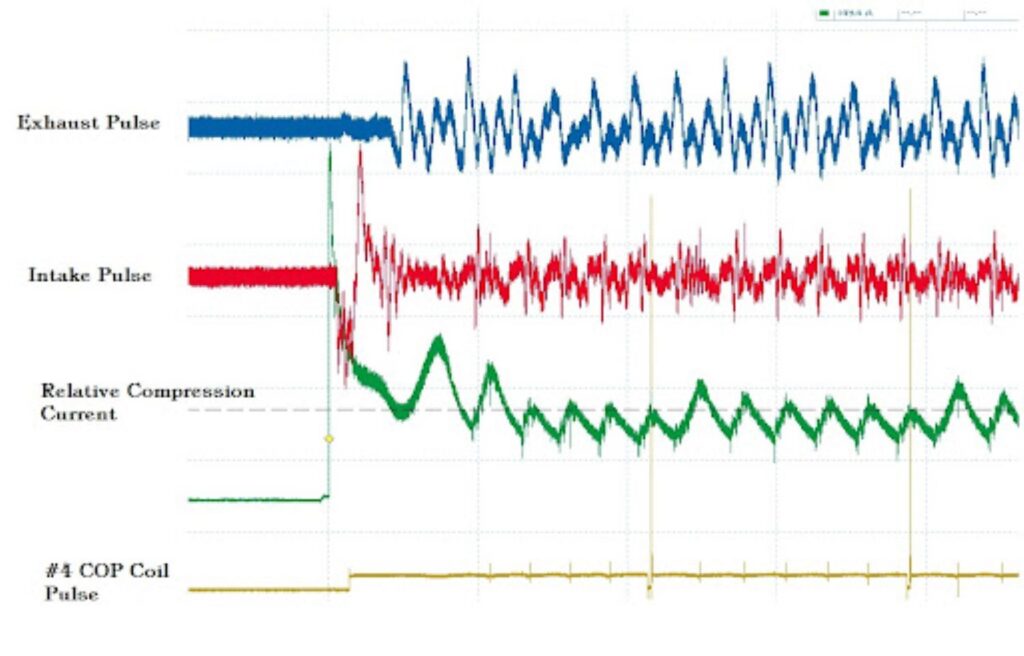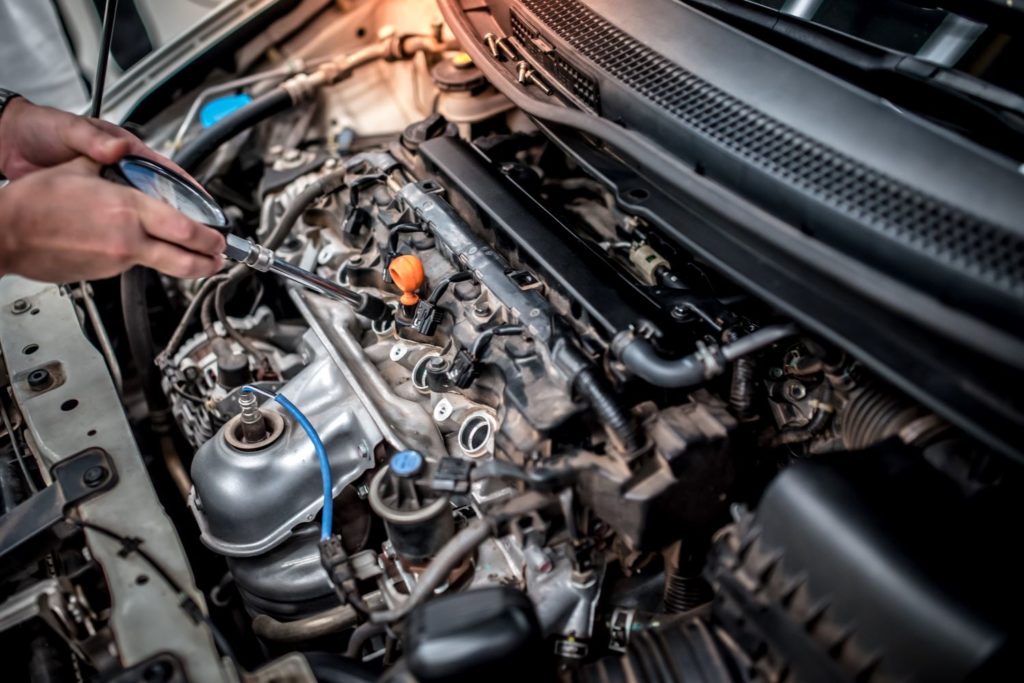An internal combustion engine (ICE) is basically a machine that breathes air in, adds fuel, compresses the air/fuel mix, ignites it, and harnesses the expanding gasses in a controlled fashion to create power.
The pumping action of each engine cylinder is the heart of what makes an engine work. If one or more cylinders is leaking during the compression stroke, the power produced by that cylinder or cylinders will be reduced.
Cylinder compression is contained when the valves are closed and seated (not leaking), the piston rings are matched to the cylinder walls, and there’s no other place the compressed air can escape. But even on healthy engines, there’s a bit of “blow by” that makes its way past the piston rings during the compression stroke and the power stroke that follows.
If you believe your engine to be mechanically unhealthy, you need to gather data to craft a workable solution. While there are several different tests that can be performed to verify the mechanical health of an engine, this article will focus on compression testing.
What Is a Compression Test?
The compression test is a procedure that measures the ability of a cylinder to contain the pressure produced while the piston is traveling upward with both valves closed.
The four strokes are:
- Intake (piston going town, intake valve open, air mixed with fuel entering the cylinder)
- Compression (valves closed, piston rising toward the head)
- Power (air fuel mix ignited by the spark, expanding gasses driving the piston down)
- Exhaust (piston is driven back up as the crankshaft turns, the exhaust valve is open, and the now-inert mix is released). Then the cycle repeats.
On a four cylinder, a firing event happens every 180 degrees of crankshaft rotation. Properly taken compression readings can provide insight into the condition of valves, valve seats, piston rings, and other parts related to the combustion chamber’s ability to hold pressure.

There are also “running compression tests” mechanics do that can be done but those usually can’t be performed by DIYers.
Why Do You Need To Do an Engine Compression Test?
The compression ratio and the volumetric efficiency of engines vary according to manufacturers. When any of the valves, head gaskets, the head itself, piston rings, cylinder walls, or the piston itself are compromised by damage or wear, the compression in the cylinder in question will be reduced.
If an engine is spinning mechanically out of time (belt or chain issues), compression may be low on all cylinders. If the engine is simply worn out, the compression may be low but even on all cylinders.

When Should You Perform an Engine Compression Test?
You should run compression tests on each of your engine’s cylinders as early as possible if your vehicle shows any of the symptoms listed below:
- Regular (not intermittent) misfiring on one cylinder.
- Reduced or slowed acceleration while driving; an engine that has slowly become weaker mechanically will exhibit this symptom.
- Reduced fuel economy
Is a DIY Compression Test Possible?
Yes, you can perform a compression test yourself if you have the appropriate equipment and sufficient experience in DIY auto care.
You will need a compression gauge, which is a mechanical device that can measure the compression inside a running cylinder. The gauge goes into the spark plug hole of a cylinder. When the engine cranks over, the gauge will measure the compression produced inside the cylinder and display the reading. Note the reading for each cylinder and if any are lower or higher than the others.
How To Test Engine Compression
Before starting the compression test, see if you can find someone to assist you. Your helper should know enough about driving to properly crank the engine when you ask them to. This is not required, but it will make the job easier.
Spin the engine over and listen to see if you can detect any cylinders that pick up speed rather than squeezing air. If you’re listening to a four cylinder and every fourth squeeze sounds like the piston is moving faster and with less effort, suspect low compression. You’ll need to do a compression test after that to identify the guilty cylinder.

Raise the engine’s temperature to operational level
The first step is to warm up the engine until it is ready to run like normal. This is important because many engine parts involved in compression will undergo thermal expansion as they grow hotter. The expanded parts will contribute to the correct compression ratio.
That being said, a cold compression test can still reveal compression issues with a cylinder. Some say that spark plugs shouldn’t be removed from aluminum heads while the engine is hot, so be careful about doing this on a hot engine.
Turn off the engine
Once you’ve got the engine running at the right temperature, turn it off. You need the parts involved with the compression rate to become hot enough. At the same time, you don’t want combustion to take place during the compression test.
Disable the fuel delivery system by removing the fuel pump relay switch. Do the same for the ignition system by disconnecting the coil pack. This way, no fuel will flow to the engine and the spark plugs won’t get the power they need to ignite fuel.
Remove the spark plugs
Continuing from the previous step, disconnect the wires leading to the spark plugs. Then remove the plugs to expose the holes leading into their respective cylinders.
Put the compression gauge in the cylinder
It’s recommended to install the compression gauge in the spark plug hole of the nearest cylinder. Once you complete the compression test for a cylinder, transfer the gauge to the one behind it. If the engine has two rows of cylinders, finish one row first and then repeat with the first cylinder on the other row.
Briefly crank the engine to test each cylinder
Now it’s time to fire up the engine once more. Turn the key and crank the engine for three to five seconds. Do this several times until the gauge shows the maximum compression reading for the cylinder. Mark down the measurement for later comparison. Repeat this step for the remaining cylinders until you’ve tested all of them.
If you have an assistant, let them crank the engine while you concentrate on taking accurate measurements of the compression ratio in each cylinder.

Evaluate the compression gauge readings
After completing the compression test on the last cylinder, it’s time to compare the readings with the compression ratio recommended by the manufacturer if you can find it online. You can also compare the readings to each other. Typically, 4-valve engines will have higher normal compression than 2-valve engines. There’s also variable valve timing to consider, especially if you’re chasing a drivability issue.
Most engines will have a compression ratio that exceeds 100-psi. A healthy 2-valve engine will usually have about 160 psi on each cylinder. A healthy 4-valve cylinder will be nearer 200 psi or above.
If any of the compression gauge readings does not meet that value, there is likely an issue with one of the parts.
Next, compare the compression gauge readings with each other. While the readings will have variations, they should not be drastically different. If one of the cylinders shows a compression ratio that is lower than the others by more than 10 percent, it likely has a problem and would need further examination.
Get Replacement Parts to Fix Low Engine Compression
If you’re thinking about driving your car despite its low engine compression, please think again. Low engine compression typically means there’s an issue with your engine, and whether it’s a blown head gasket or faulty pistons, your vehicle isn’t safe to drive. You’ll have to replace any defective parts immediately. Thankfully, getting replacement parts is fast and easy with CarParts.com.
CarParts.com offers a wide selection of head gaskets, pistons, and more, all sourced from only the most trusted manufacturers in the industry. To easily browse through our catalog, make sure to use our vehicle selector and search filters. CarParts.com also guarantees fast shipping, thanks to our strategically located warehouses around the US. Order by 12 p.m. ET, and you can expect your package to arrive in as fast as two business days.
Don’t wait until your engine breaks before replacing any defective parts causing low engine compression. Check out our catalog of high-quality head gaskets, pistons, piston rings, and more at CarParts.com today!
Any information provided on this Website is for informational purposes only and is not intended to replace consultation with a professional mechanic. The accuracy and timeliness of the information may change from the time of publication.



























